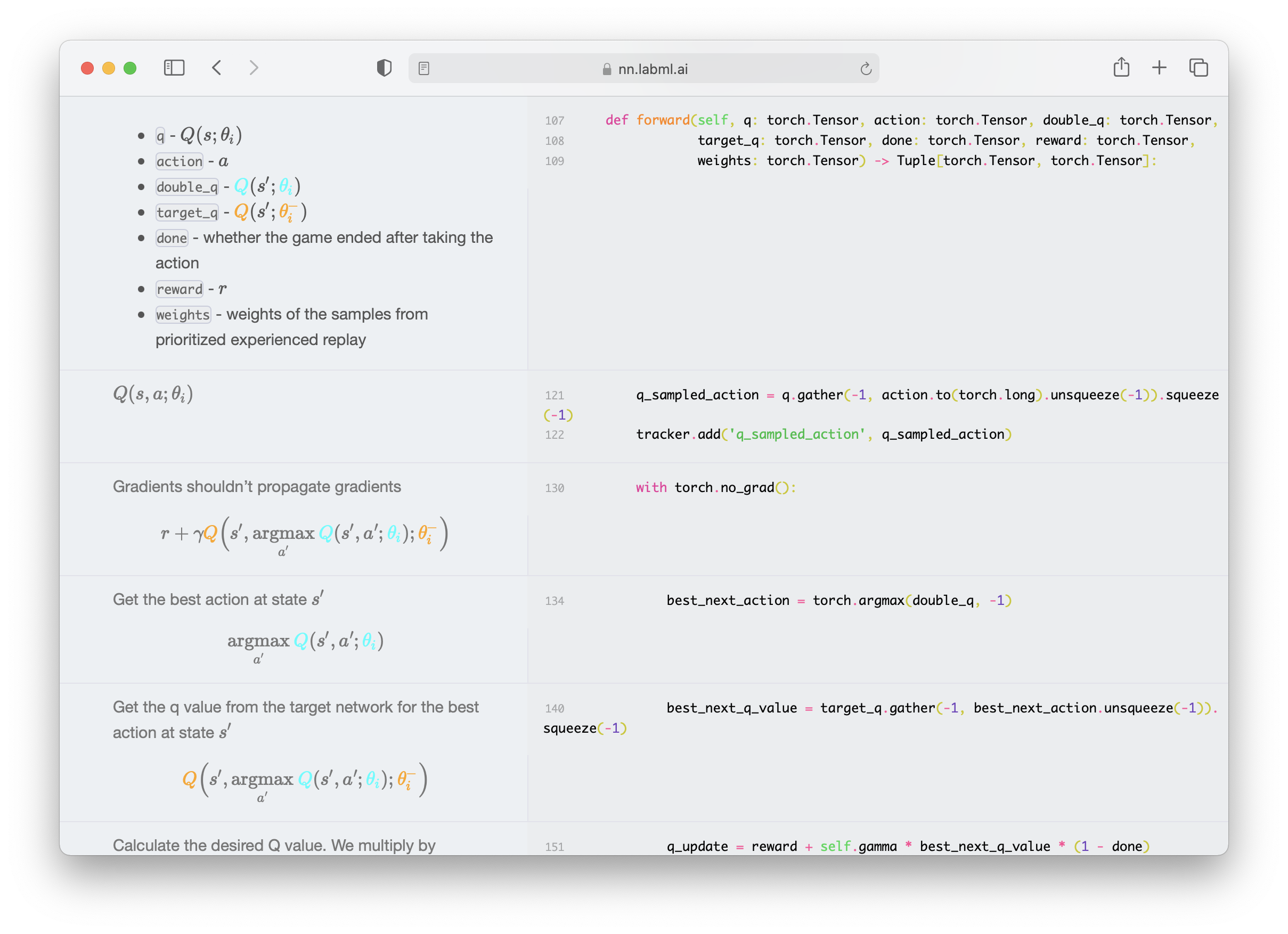labml.ai Deep Learning Paper Implementations
This is a collection of simple PyTorch implementations of neural networks and related algorithms. These implementations are documented with explanations,
The website renders these as side-by-side formatted notes. We believe these would help you understand these algorithms better.
We are actively maintaining this repo and adding new implementations almost weekly. 
Modules
✨
Transformers
- Multi-headed attention
- Transformer building blocks
- Transformer XL
- Compressive Transformer
- GPT Architecture
- GLU Variants
- kNN-LM: Generalization through Memorization
- Feedback Transformer
- Switch Transformer
- Fast Weights Transformer
- FNet
- Attention Free Transformer
- Masked Language Model
- MLP-Mixer: An all-MLP Architecture for Vision
- Pay Attention to MLPs (gMLP)
- Vision Transformer (ViT)
- Primer EZ
✨
Recurrent Highway Networks
✨
LSTM
✨
HyperNetworks - HyperLSTM
✨
ResNet
✨
ConvMixer
✨
Capsule Networks
✨
Generative Adversarial Networks
- Original GAN
- GAN with deep convolutional network
- Cycle GAN
- Wasserstein GAN
- Wasserstein GAN with Gradient Penalty
- StyleGAN 2
✨
Diffusion models
✨
Sketch RNN
✨
Graph Neural Networks
✨
Counterfactual Regret Minimization (CFR)
Solving games with incomplete information such as poker with CFR.
✨
Reinforcement Learning
- Proximal Policy Optimization with Generalized Advantage Estimation
- Deep Q Networks with with Dueling Network, Prioritized Replay and Double Q Network.
✨
Optimizers
✨
Normalization Layers
- Batch Normalization
- Layer Normalization
- Instance Normalization
- Group Normalization
- Weight Standardization
- Batch-Channel Normalization
✨
Distillation
✨
Adaptive Computation
✨
Uncertainty
Installation
pip install labml-nn
Citing
If you use this for academic research, please cite it using the following BibTeX entry.
@misc{labml,
author = {Varuna Jayasiri, Nipun Wijerathne},
title = {labml.ai Annotated Paper Implementations},
year = {2020},
url = {https://nn.labml.ai/},
}
Other Projects
🚀
Trending Research Papers
This shows the most popular research papers on social media. It also aggregates links to useful resources like paper explanations videos and discussions.
🧪
labml.ai/labml
This is a library that let's you monitor deep learning model training and hardware usage from your mobile phone. It also comes with a bunch of other tools to help write deep learning code efficiently.




